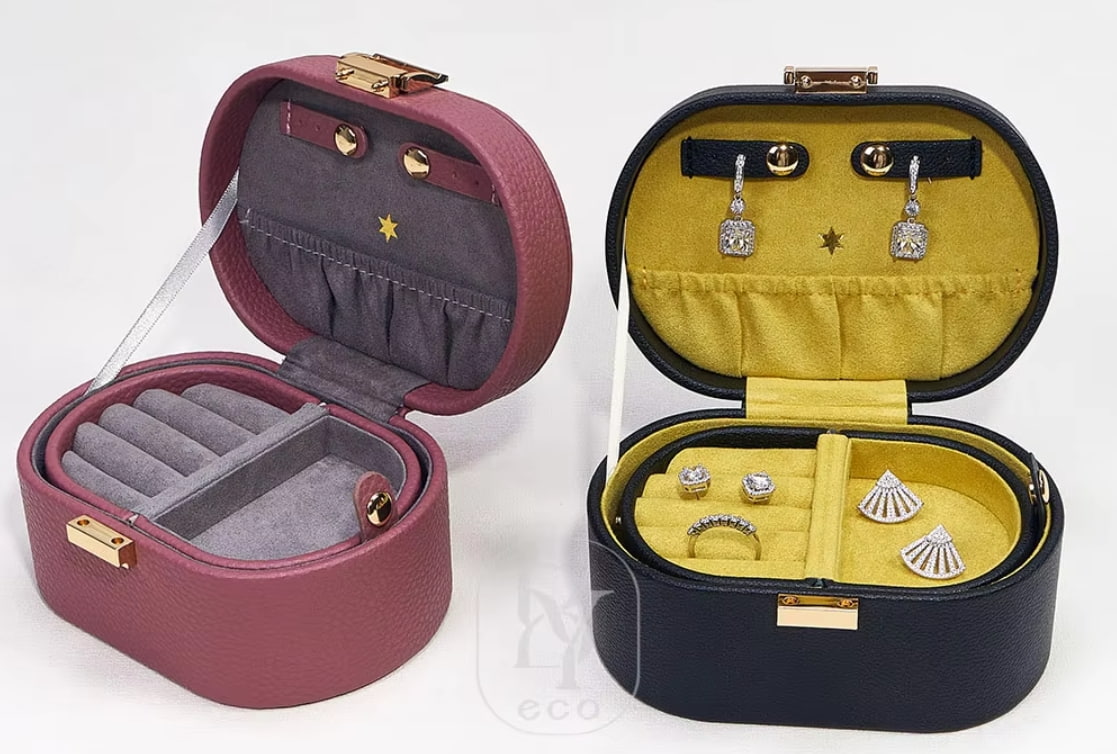You can share
- Share to Facebook
- Share to Google+
- Subscribe to our
- Share to Linkedin
- Share to Twitter

In the jewelry industry, a piece of exquisite jewelry needs to go through multiple links such as design, production, display, and sales from its birth to being worn. In this process, jewelry packaging boxes always play an indispensable role. It is not only a simple container, but also a comprehensive embodiment of brand image, product value and consumer experience.
Jewelry packaging, especially jewelry boxes, includes a complete packaging system consisting of lining, brand logo, accessories (such as wiping cloth, certificate card), and other elements. Its design must take into account functionality and artistry: on the one hand, it must protect jewelry from physical damage and environmental erosion, and on the other hand, it must convey brand tone through visual language. For example, Tiffany's blue gift box and Cartier's red box have become brand symbols, and consumers can even directly associate the brand with the color of the box.
The material selection of modern jewelry boxes is more diverse, from traditional velvet and leather to environmentally friendly recycled paper and plant fibers, which not only meet the high-end texture needs but also conform to the trend of sustainable development.

(1) Visual expression of brand value
Shaping brand recognition: Customized packaging boxes are the "mobile billboards" of jewelry brands. Unique shapes, LOGO embossing or hot stamping processes can establish a deep brand memory in the minds of consumers. For example, Bulgari's snake-shaped buckle packaging box echoes its classic snake series and strengthens the brand DNA.
Increasing product premium: Data shows that 70% of consumers believe that high-end packaging can enhance the value of jewelry. An exquisite packaging box can upgrade ordinary jewelry to "gift-level" products, helping brands achieve price breakthroughs.
(2) Core line of defense for product protection
Physical protection: Precious metals and gemstones are susceptible to scratches and oxidation. High-quality jewelry packaging boxes use shockproof linings (such as EVA sponges) and anti-oxidation coatings to ensure safe transportation and storage. For example, diamond products need to use anti-static linings to prevent dust absorption from affecting the gloss.
Anti-theft and sealing: For high-priced jewelry, packaging boxes are often equipped with anti-theft designs such as magnetic buckles and password locks, and at the same time, the sealing structure blocks moisture and pollutants.
(3) Key touchpoints of consumer experience
Unboxing ritual: The process of consumers unpacking the package directly affects their purchase satisfaction. Layered design (such as drawer-style gift boxes), ribbon decoration, lighting effects and other details can create a pleasant experience like "unpacking gifts". A jewelry brand adds scented cards to make the unboxing process a dual enjoyment of smell and vision.
Emotional connection bridge: The packaging box can carry additional services such as handwritten greeting cards and maintenance guides to enhance the emotional stickiness between users and brands. For example, wedding ring brands often design double-opening gift boxes for newlyweds to open together, giving them a sense of ritual.
(4) Invisible promoter of marketing conversion
Social communication value: In the era of social media, packaging boxes with a sense of design are often shared spontaneously by consumers, forming secondary communication. A light luxury jewelry brand has received millions of exposures on Instagram with its environmentally friendly packaging box that can "plant seeds".
Repurchase and extended sales: Reusable packaging boxes (such as jewelry storage boxes) can extend the brand exposure cycle and provide an entry point for selling supporting products (such as cleaning tools).
(5) The contemporary requirement of environmental responsibility
As global environmental awareness increases, 60% of consumers prefer brands that use sustainable packaging. The jewelry industry is accelerating the promotion of environmentally friendly materials such as FSC-certified paper and biodegradable plastics. For example, Pandora launched packaging boxes made of recycled plastic bottles, which not only reduces the carbon footprint but also fits the values of young customers.

For jewelry practitioners:
Balance cost and quality: Choose packaging solutions based on product positioning. High-end lines can use solid wood + metal accessories, while fast fashion series can focus on creative design to reduce costs.
Strengthen functional innovation: For example, develop packaging boxes with built-in UV detectors (to prevent gemstones from fading) or integrate NFC chips to achieve anti-counterfeiting traceability.
Pay attention to policies and trends: Plan a recyclable packaging system in advance to respond to policy requirements such as the EU "Packaging and Packaging Waste Regulation".
For consumers:
Identify packaging safety: Check whether the lining is soft and burr-free, and whether the lock is firm to avoid low-priced and low-quality packaging damaging jewelry.
Make good use of the added value of packaging: transform brand packaging boxes into jewelry storage tools, or reuse them as holiday gift boxes.
Support environmentally friendly choices: give priority to brands that use recycled materials to promote the sustainable development of the industry.